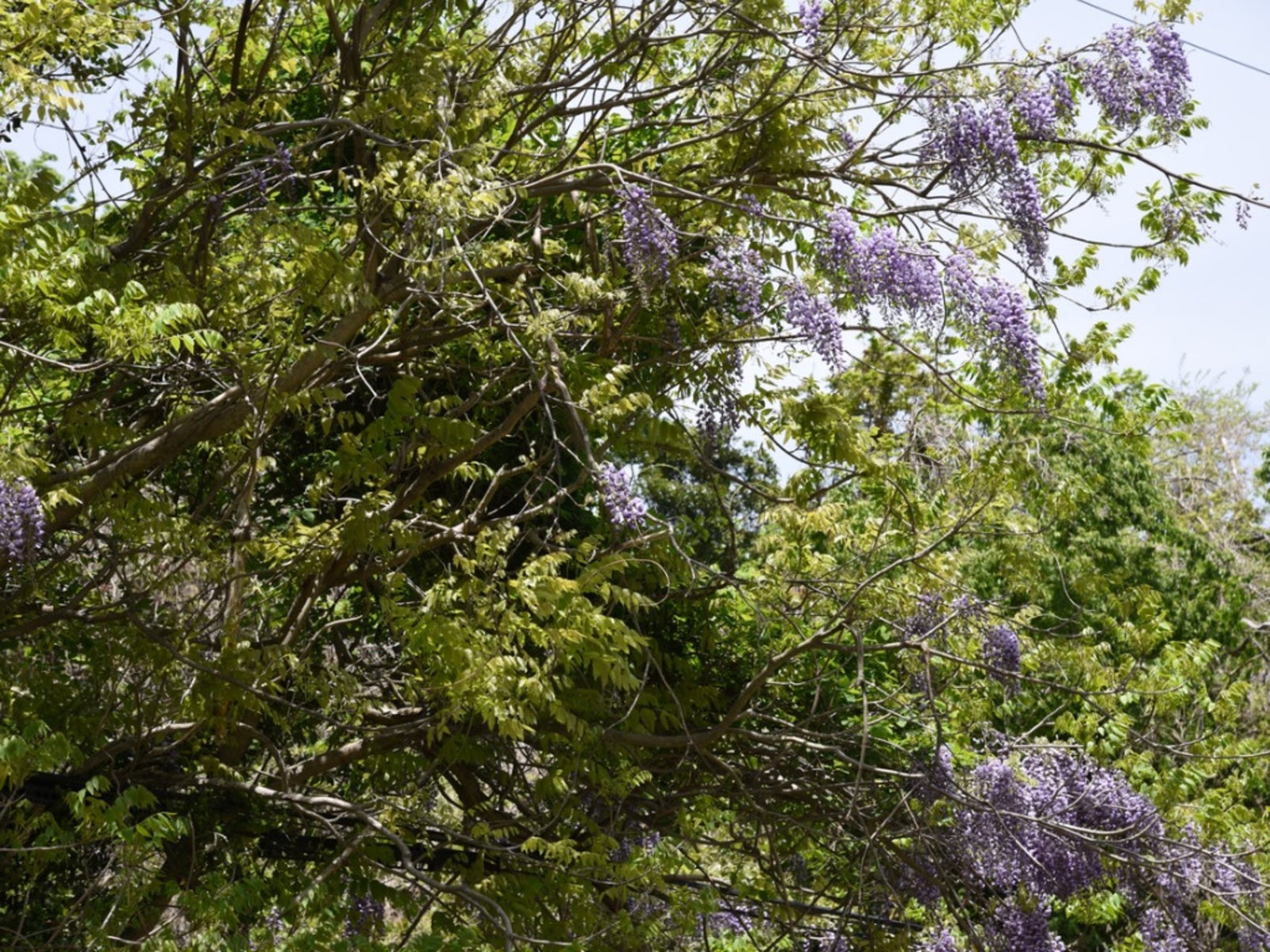Silky Wisteria Information: How To Grow Silky Wisteria Vines


Wisteria is a classic, deciduous vine, beloved for its large, drooping clusters of fragrant, pea-like flowers and quick growth habit. Wisteria fits in nicely in cottage gardens, Zen/Chinese gardens, formal gardens, and can even do well in xeriscape gardens once they are established. There are approximately ten different species of wisteria, native to China, Korea, Japan, and the eastern United States. While not all of these species are commonly found in garden centers or online nurseries, many new species and cultivars are easily available. Chinese wisteria (Wisteria sinensis) and Japanese wisteria (Wisteria floribunda) are two of the most popular species of wisteria for the landscape. However, in this article, we will discuss the lessor known, Silky wisteria (Wisteria brachybotrys syn. Wisteria venusta).
Silky Wisteria Information
Silky wisteria is native to Japan. However, it is not classified as Japanese wisteria because it has characteristics that make it quite different than the species commonly known as Japanese wisteria. The foliage of silky wisteria is covered in silky or downy hairs, which accounts for its common name. While Japanese wisteria has long flower racemes, silky wisteria’s racemes are only 4 to 6 inches (10-15 cm.) long. Silky wisteria plants are hardy in zones 5 through 10. They bloom from midspring to midsummer. The violet-lavender blooms are highly fragrant and attract bees, butterflies, and birds to the garden. From a distance, wisteria flower racemes look like clusters of grapes. Up close, the small flowers are similar to pea flowers. When the flowers fade, wisteria produces pea-like seed pods, and these seeds can be toxic if ingested. When propagated by seed, silky wisteria plants may take five to ten years before they produce blooms. However, wisteria plants usually produce more and more blooms each year they age.
How to Grow a Silky Wisteria Vines
Silky wisteria vines grow best in full sun to part shade. They will tolerate poor soil but prefer moist loam. Fertilize silky wisteria plants in spring, with a low nitrogen fertilizer. Wisteria plants have nitrogen-fixing properties, so adding nitrogen to them is not necessary. They will, however, benefit from added potassium and phosphorus. Silky wisteria plants are a fast-growing deciduous vine, growing up to 40 feet (12 m.) long. Silky wisteria vines will quickly cover a pergola, arbor, or trellis. They can also be trained to grow in the form of a tree. Wisteria can be pruned after blooming to control its growth. Some popular varieties of silky wisteria plants are:
- ‘Violacea’
- ‘Okayama’
- ‘Shiro-Beni’ (produces flowers of purple shades)
- ‘Shiro-kapitan’ (produces white blooms)
Gardening tips, videos, info and more delivered right to your inbox!
Sign up for the Gardening Know How newsletter today and receive a free copy of our e-book "How to Grow Delicious Tomatoes".
-
 Looking For Plants To Give You The Soft And Fuzzies? Try These 5 Fuzzy Leaf Plant Options
Looking For Plants To Give You The Soft And Fuzzies? Try These 5 Fuzzy Leaf Plant OptionsLovers of texture, drama, silver foliage and tactile plants will adore these special sensory garden additions. These fuzzy leaf plant options will leave you all aglow
By Susan Albert
-
 Get Ready For A Summer Of Hummers! Grow These Full Sun Hummingbird Plants and Flowers
Get Ready For A Summer Of Hummers! Grow These Full Sun Hummingbird Plants and FlowersIf you’re lucky enough to enjoy a sunny backyard, make sure you are maxing out on your pollinator opportunities and grow these full sun hummingbird plants and flowers
By Tonya Barnett